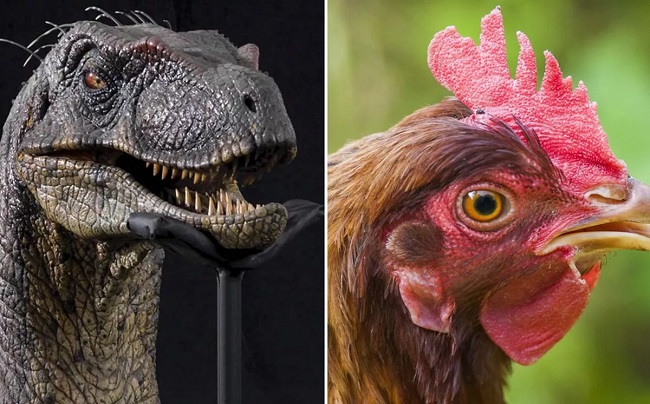The rich and diverse world of dinosaurs continues to captivate us, years after their extinction. These magnificent creatures once dominated the Earth, and the traces they left behind have helped us paint a picture of life millions of years ago.
Yet, one question that sparks particular intrigue among both scientists and dinosaur enthusiasts is, “Who is the Closest Dinosaur Relative Living Today?”
Join us as we unravel this mystery and delve into the intriguing connection between dinosaurs and their modern-day counterparts.

Understanding Dinosaur Lineages
To understand the closest Living relatives of dinosaurs, it’s vital first to comprehend dinosaur lineages. Dinosaurs, according to the most widely accepted scientific classification, belong to a group known as ‘Archosaurs,’ which also includes crocodiles and birds.
Read Also:
However, not all dinosaurs are closely related. For instance, long-necked herbivorous dinosaurs like Brachiosaurus and the fearsome carnivore Tyrannosaurus rex belong to different lineages within the dinosaur family tree. Hence, different dinosaur species may have different closest Living relatives.
Birds: The Living Descendants of Dinosaurs
Perhaps surprisingly, the closest relatives of dinosaurs are not the giant reptiles that might come to mind, but birds. Yes, those chirping creatures in your backyard are the Closest Dinosaur Relatives we have Today!
The theory that birds descended from theropod dinosaurs, which include the notorious T-rex and smaller velociraptors, is widely accepted in the scientific community.
Various physical characteristics, such as feathers and hollow bones, as well as nest-building and egg-laying behaviors, form the basis of this link.
So, if you’re looking for the Closest Dinosaur Relative, look no further than the birds fluttering outside your window!
The Avian-Dinosaur Connection: A Closer Look
Birds, classified under the group ‘Avialae’, are not just related to dinosaurs – they are dinosaurs. Just as humans are a kind of primate, birds are a type of dinosaur, specifically theropods. The Archaeopteryx, a fossil discovered in the late 19th century, was the first clue to this connection.
This creature, with both bird-like (feathers, wishbone) and dinosaur-like features (teeth, a long bony tail), served as the missing link between these two groups.
Further studies, including an array of well-preserved fossils from China showcasing dinosaurs with feathers, have solidified the bird-dinosaur connection. Today, birds carry the legacy of dinosaurs, Living proof of their existence and enduring relevance.
Other Close Relatives: Crocodiles and Alligators
While birds take the title for the closest Living relatives to dinosaurs, crocodiles and alligators deserve an honorable mention. They are considered the closest Living relatives of dinosaurs outside the bird lineage.
Like dinosaurs, crocodiles and alligators belong to the Archosaur group. However, they are from a different lineage, known as ‘Crurotarsi’ or ‘Pseudosuchia.’
Despite not being direct descendants, studying these creatures can still provide valuable insights into the life and behavior of their extinct cousins.
Read Also:
- Morning After Pills For Dogs
- Old English Sheepdog Mix with Poodle
- English Bulldog Mix with American Bulldog
Conclusion
The quest to uncover the Closest Dinosaur Relative takes us on a fascinating journey through Earth’s evolutionary history, landing us right in our own backyards. Birds, descendants of theropod dinosaurs, hold this unique title, representing an enduring link to a prehistoric era.
The understanding that birds are Living dinosaurs redefines our perspective on these extraordinary creatures and reminds us of the intricate web of life that connects us all.
It’s a testament to the fluidity of evolution and the enduring legacy of the dinosaur lineage that continues to survive, adapt, and thrive amidst us.
























